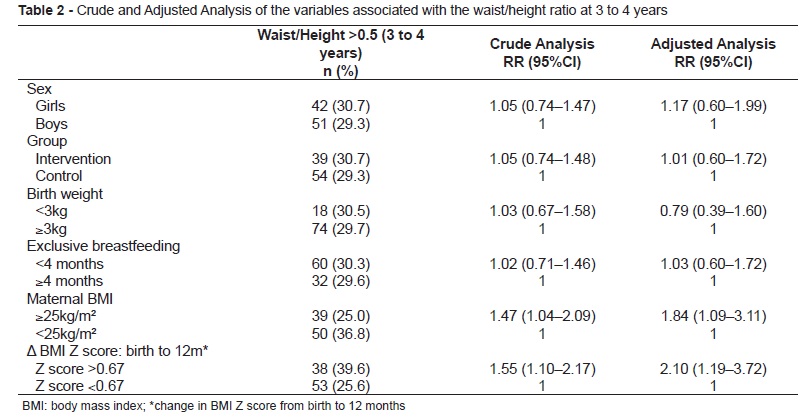OBJECTIVE: To assess whether the change in body mass index Z-score for age >0.67 in the first year of life was associated with overweight at preschool age. METHODS: A cohort study nested in a randomized field trial conducted in São Leopoldo, Rio Grande do Sul, Southern Brazil. Data on weight and height of children at birth, from six to eight, and from 12 to 16 months were collected. From ages three to four, besides these data, waist circumference was measured. Weight gain was calculated by the difference in body mass index/age Z-score from 12 to 16 months in relation to that at birth, adopting as cutoff >0.67 Z-score for weight gain. Waist-to-height ratio was calculated, and the excess of central adiposity was considered for values >0.5. Multivariate analysis to test the association between outcomes and independent variables was applied. RESULTS: The prevalence of excessive weight gain in the first year of life was 29.5% out of the 338 studied children. After adjustment for gender, origin group, birth weight, duration of exclusive breastfeeding and mother's body mass index, the change in >0.67 Z-score from birth to 12 to 16 months was an independent risk factor for overweight (RR 2.81, 95%CI 1.53-5.16) and for elevated waist-to-height ratio (RR 2.10, 95%CI 1.19-3.72) in preschool age. CONCLUSIONS: Excessive weight gain in the first year of life was associated with overweight and high abdominal adiposity at preschool age.
weight gain; adiposity; child, preschool


